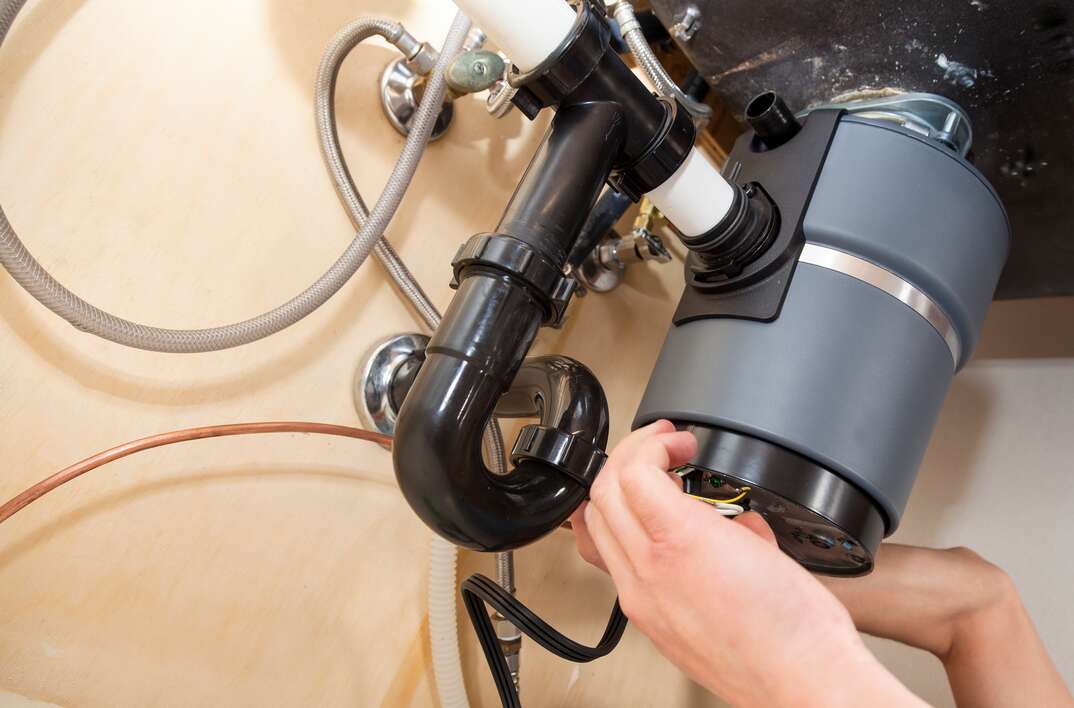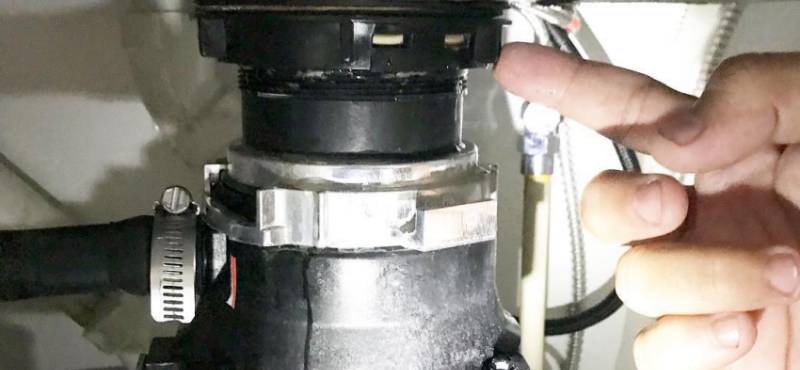Our Definitive Guide to Fixing a Leaky Waste Disposal Unit
Our Definitive Guide to Fixing a Leaky Waste Disposal Unit
Blog Article
They are making a number of great pointers on The Handy Guide To Fixing Your Garbage Disposal Leaking overall in the content underneath.

Waste disposal unit are necessary kitchen devices that assist in getting rid of food waste effectively. Nevertheless, a leaking waste disposal unit can be a frustrating and unpleasant problem to manage. The good news is, lots of leaks can be fixed quickly with a couple of straightforward actions. In this article, we will discuss exactly how to take care of a dripping waste disposal unit effectively.
Introduction
Garbage disposals are installed under kitchen area sinks and are developed to shred food waste into smaller items, enabling it to travel through the pipes system quickly. While these gadgets are usually reputable, leakages can take place with time due to deterioration, loose connections, or damage to the system.
Common Sources Of Leaks in Trash Disposals
Worn Seals and Gaskets
Seals and gaskets play a vital role in stopping water from leaking out of the waste disposal unit. In time, these parts can degrade, causing leaks around the disposal unit.
Loose Links
The links between the garbage disposal and the pipes system can end up being loosened gradually, causing water to leakage out throughout procedure.
Splits or Openings in the Disposal System
Physical damages to the garbage disposal, such as fractures or holes in the housing, can additionally result in leaks.
Recognizing the Source of the Leakage
Prior to attempting to fix a leaking waste disposal unit, it is necessary to recognize the resource of the leakage. This can normally be done with aesthetic assessment or by conducting simple tests.
Visual Examination
Evaluate the waste disposal unit unit carefully for any indicators of water leak. Pay close attention to areas around seals, gaskets, and link factors.
Checking for Leaks
One method to evaluate for leakages is by running water via the disposal system and checking for any noticeable indicators of leak.
Devices and Materials Needed for Dealing With a Leaking Garbage Disposal
Before beginning the fixing procedure, gather the required tools and materials, including a screwdriver, flexible wrench, plumbing's putty, substitute seals or gaskets, and epoxy or patching material for repairing fractures or openings.
Step-by-Step Guide to Dealing With a Leaking Garbage Disposal
Shut off the Power
Before attempting any type of fixings, ensure that the power to the waste disposal unit system is turned off to stop the danger of electric shock.
Find the Leakage
Identify the exact place of the leakage and figure out the cause.
Tighten Connections
Use a wrench to tighten any type of loosened connections between the disposal unit and the plumbing system.
Change Seals or Gaskets
If the leak is due to worn seals or gaskets, eliminate the old components and replace them with new ones.
Patching Cracks or Holes
For splits or openings in the disposal device, use epoxy or a suitable patching product to secure the broken location.
Examining the Waste Disposal Unit After Repair Service
When the repair service is complete, evaluate the garbage disposal by running water through it to make certain that the leakage has actually been solved.
Preventive Upkeep Tips to Prevent Future Leaks
To prevent future leaks, it is vital to execute routine upkeep on your waste disposal unit. This consists of keeping it clean, staying clear of placing non-food items or difficult things down the disposal, and regularly looking for leakages or other concerns.
Conclusion
To conclude, repairing a dripping waste disposal unit is a reasonably simple process that can be finished with fundamental devices and products. By following the steps laid out in this article and exercising precautionary maintenance, you can maintain your garbage disposal in good working condition and stay clear of expensive fixings in the future.
HERE’S HOW TO FIX YOUR GARBAGE DISPOSAL
WHAT TO DO IF SOMETHING IS STUCK IN YOUR GARBAGE DISPOSAL
If the impeller won’t turn, there’s probably something stuck in the disposal. It could be a steak bone or peach pit, although plumbers report pulling all sorts of inappropriate objects out of disposals, such as bottle caps or aluminum foil. Make sure power to the disposal is off, and look inside to see if you can see the source of the jam.
Never stick your fingers in a disposal. Pull out anything you see with tongs or pliers.
If the disposal still won’t work, it may be time to call a plumber or consider buying a new disposal. GEM Plumbing & Heating is here for all of your garbage disposal needs.
WHAT TO DO IF YOUR GARBAGE DISPOSAL DRAIN IS CLOGGED
Take everything out from underneath your sink and put a bucket or other container under your disposal to catch any water that drains out. Disconnect your disposal from the power supply. If it’s plugged into a wall outlet, unplug it. If it’s hardwired into an electrical box, go to the electrical panel and turn off the breaker for the disposal. Pour ¼ cup of baking soda into the drain, followed by ½ cup of white vinegar. Give the solution a few minutes to fizz and do its work. Look into the disposal with a flashlight to see if you can see an object that might be causing the clog. If you see it, remove it using tongs or pliers. MORE TIPS ON DEALING WITH A CLOGGED GARBAGE DISPOSAL
Never use drain cleaner in a garbage disposal. It can damage the plastic parts inside the disposal. You can also be splashed with the caustic liquid while working to clear the clog. Beware! Never stick your fingers into a garbage disposal. Trust us — not a good idea. In many instances, your dishwasher drains through your garbage disposal. This allows the disposal to grind any large food particles that may be drained out of your dishwasher. There are some jurisdictions, however, where the plumbing code prohibits such a connection. WHAT TO DO WHEN YOUR DISHWASHER DRAINS THROUGH THE DISPOSAL
Run some water in the sink so your plunger has at least a ½-inch of water to create a seal and plunge vigorously up and down several times. You may need to repeat this several times. Run hot water down the drain to clear any residue that remains.

Hopefully you enjoyed reading our excerpt on Why Is . Thanks so much for spending some time to read our content. Sharing is caring. Who knows, you may just be helping someone out. We enjoy reading our article about Why Is .
Go Deal Now Report this page